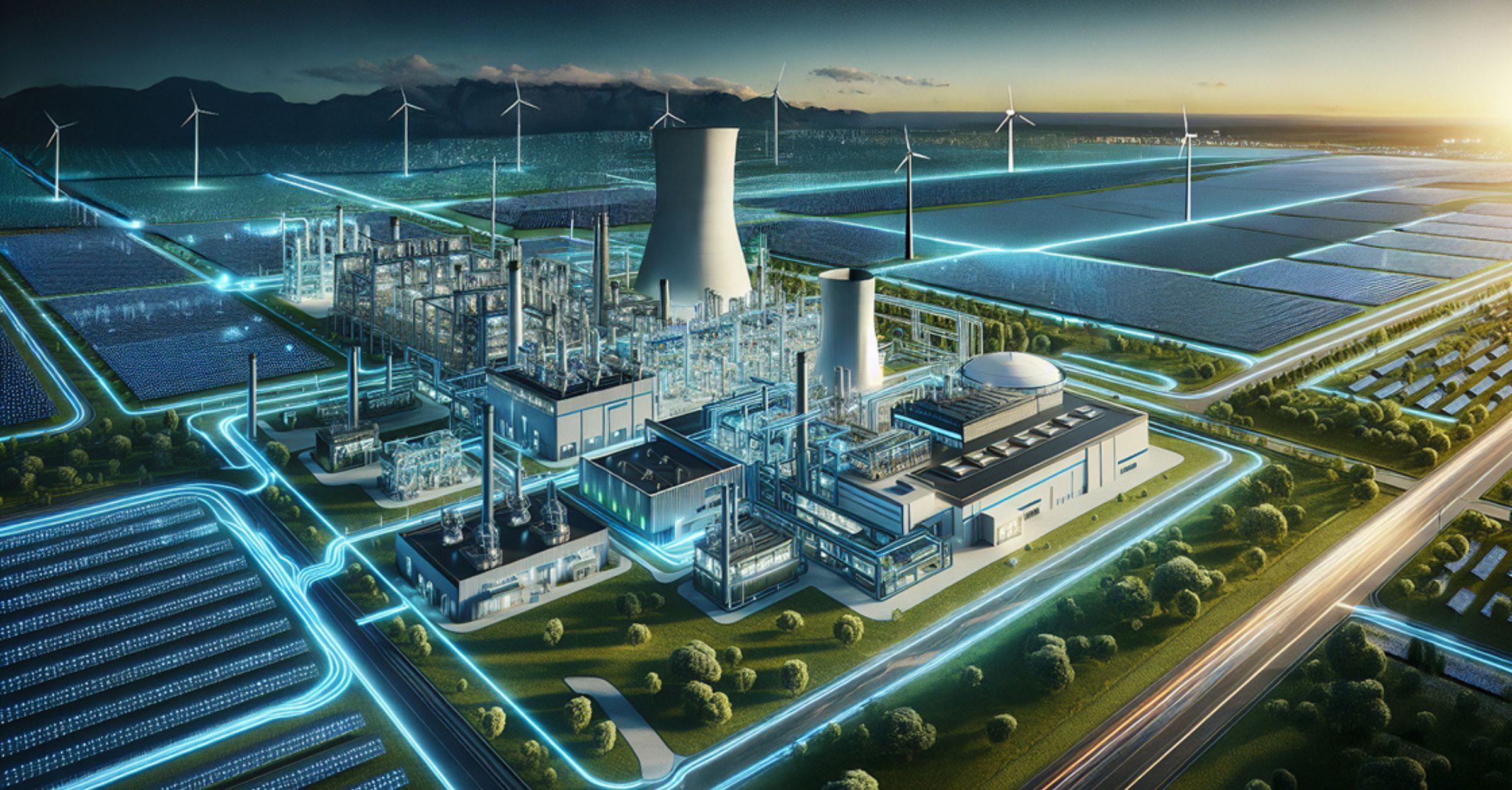Using Waste Heat from Data Centres: Turning Digital Heat into Community Warmth
Imagine this: Every time you watch a series, train an AI model, or back up your company's data, a data centre somewhere is hard at work – and all the...

At first glance, the question of how district heating is produced and what it consists of may seem simple, but it touches on central aspects of the energy transition. District heating is not a homogeneous fuel, but an energy source whose composition varies greatly depending on the country, city, or supplier. Whether it comes from natural gas, coal, biomass, industrial waste heat, or renewable technologies such as solar thermal energy and large-scale heat pumps, the energy mix determines efficiency, emissions, and cost-effectiveness.
The composition of district heating is strongly influenced by regional framework conditions. While some countries continue to let fossil fuels dominate, others are already consistently relying on renewable heat sources and industrial waste heat. A recent analysis by the IEA and Euroheat & Power shows that globally, district heating is still predominantly based on coal and natural gas. However, Europe is advancing more rapidly in integrating renewable sources and waste heat from data centres. Scandinavian countries are leading the way, while Eastern Europe and North America are lagging behind. These differences make it clear that the question "what district heating consists of" cannot be answered globally. It is determined regionally and politically, and changes dynamically with investment cycles and climate targets.
To understand how district heating worksit is important not only to consider the energy mix, but also the entire technical conversion chain. From the source to the heating surface in the building, heat passes through several stages, where efficiencies and losses are critical. A district heating system connects several levels to form a continuous infrastructure.
The focus is on the generation plants – heating plants, CHP plants, or heat pumps – supplemented by storage systems that cushion peak loads and pumping stations that maintain pressure and flow throughout network. The backbone of the system is the pipeline network, where heated water circulates between production and consumers.
An efficient district heating system depends crucially on the structure and design of the distribution network. While components such as the generation plant, storage system, and transfer stations are relatively fixed from a technical perspective, the grid structure offers flexibility that significantly influences security of supply, efficiency, and adaptability.
What district heating consists of depends on the respective energy mix or the available sources. Equally important is the question: how does heat reach consumers? Different types of networks are used depending on demand and topography:
Traditionally, steel or cast iron pipes dominate high-temperature networks. In low-temperature or district networks, plastic pipes or PP systems are increasingly important. Key benefits include:
District heating is undergoing a fundamental structural transformation. While fossil fuels continue to dominate the energy mix in many regions, political requirements, technological innovations, and economic factors are accelerating the transition to green district heating based on renewable and waste heat sources.
Political objectives as drivers
The European Union is pursuing ambitious goals through the "Fit for 55" package and the Renewable Energy Directive (RED III): By 2030, decarbonisation of district heating is to be significantly expanded. District heating is a key instrument because it can tap into waste heat sources and systemically integrate various renewable technologies.
Technological innovations
The use of large heat pumps is growing dynamically. Cities such as Hamburg and Copenhagen use river water or wastewater to raise heat to a grid-compatible temperatures. Power-to-heat technologies, such as electrode boilers and heat pumps, convert surplus renewable electricity into heat, relieving the load on power grids. Large-scale solar thermal energy is also experiencing a resurgence, particularly in Denmark, where collector fields over 100,000 m² feed district heating networks. In addition, there are projects for deep geothermal energy, such as in Munich, which aims to fully convert its network to geothermal sources by 2040.
Strategic factors influencing the composition
The composition of district heating is not determined solely by technical options. It results from an interplay of infrastructure, market mechanisms, and political frameworks. International studies show that the pace of transformation depends on how these factors interact.
The grid structure determines the range of possible energy sources. A 2019 analysis in Energy, Sustainability and Society shows that building density, heat load, and insulation standards are decisive for the profitability of district heating. Political instruments accelerate the transition: a 2022 report by the Pacific Northwest National Laboratory identifies CO₂ pricing, targeted subsidies, and local heat planning as key levers. A 2023 case study on the Finnish district heating sector highlights the crucial role of housing associations, industry, and citizens in successfully implement projects.
District heating consists of a dynamic energy mix. The strategic challenge is to reduce dependence on fossil fuels while maintaining security of supply and economic viability. The interaction of all dimensions – technology, market, and politics – is crucial and must be carefully coordinated.
The experts at aquatherm support you with fact-based analyses, evaluation of network structures, and guidance on technology options. Get in touch to define your next steps towards sustainable district heating.
Contact us today to start your project assessment.
Imagine this: Every time you watch a series, train an AI model, or back up your company's data, a data centre somewhere is hard at work – and all the...
How can the climate-friendly heating transition succeed in metropolises, cities, and municipalities worldwide – and do so in a safe and affordable...
The heating transition is under great pressure: heating networks must be built faster, CO₂ emissions must fall, and supply costs must remain stable....